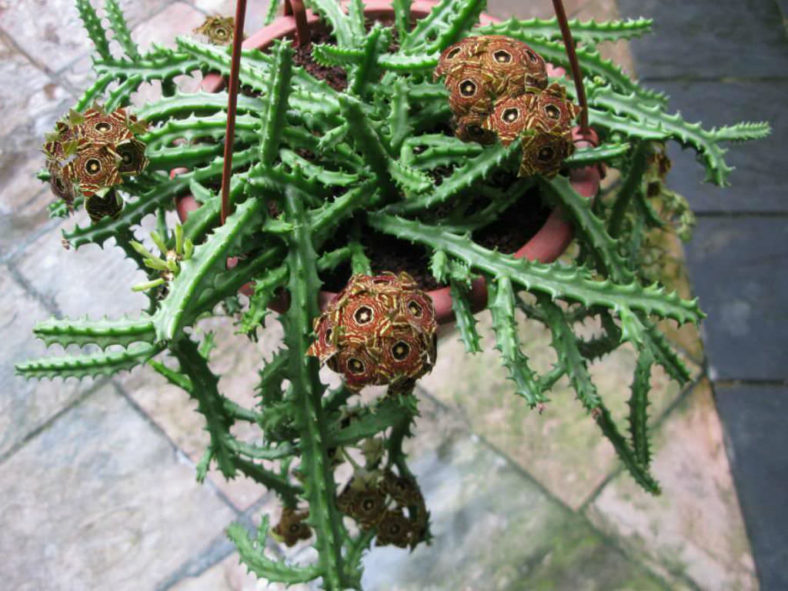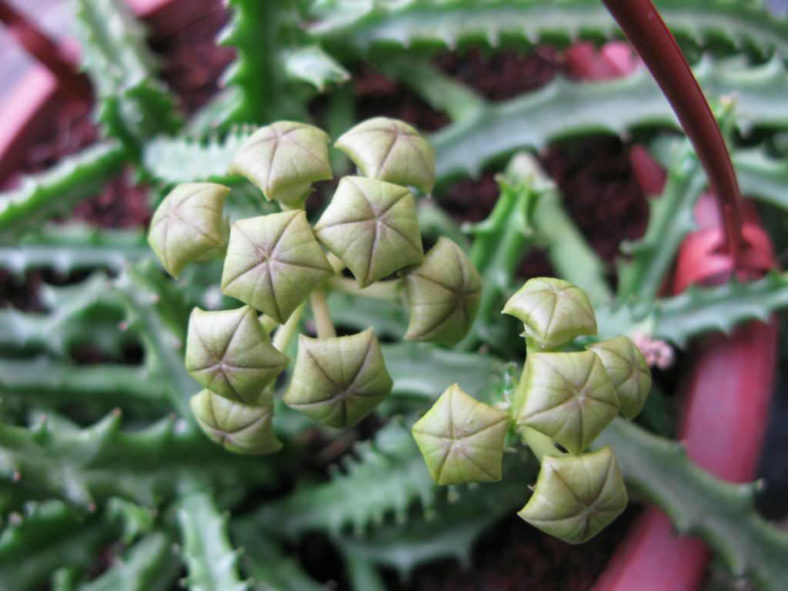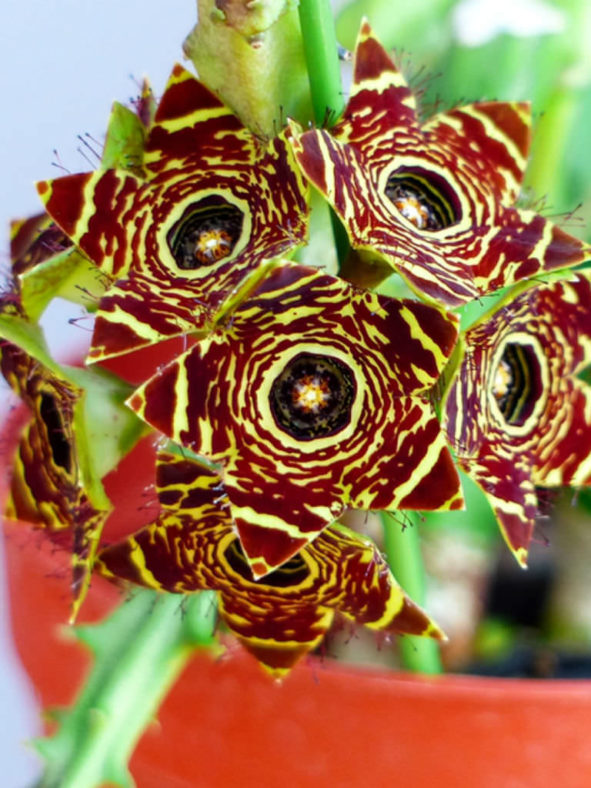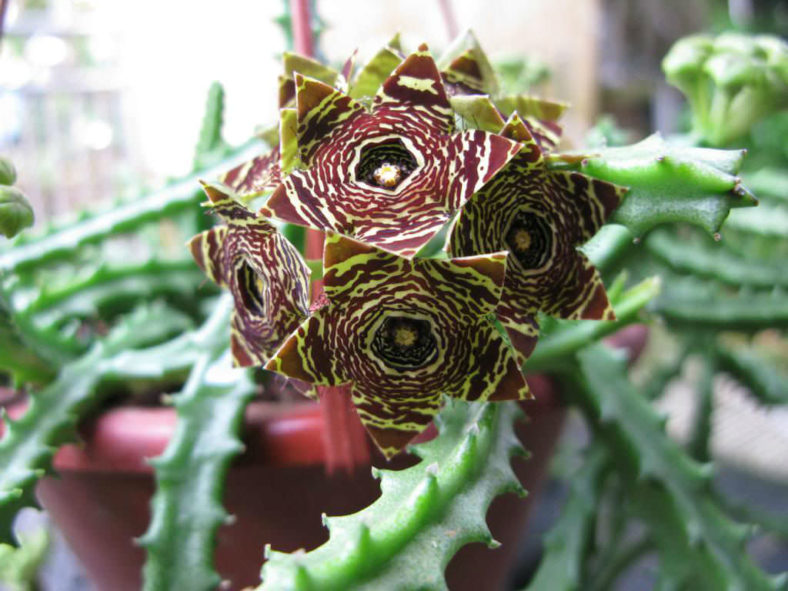Scientific Name
Boucerosia crenulata (Wall.) Wight & Arn.
Synonym(s)
Caralluma crenulata, Ceropegia crenulata, Desmidorchis crenulata, Hutchinia crenulata
Scientific Classification
Family: Apocynaceae
Subfamily: Asclepiadoideae
Tribe: Ceropegieae
Subtribe: Stapeliinae
Genus: Boucerosia
Etymology
The specific epithet "crenulata" (pronounced "kren-yoo-LAY-ta") means "crenulate, minutely crenate or scalloped" and refers to the toothed angles of the stems of this species.
Origin
Boucerosia crenulata is native to Myanmar.
Description
Boucerosia crenulata, formerly known as Caralluma crenulata, is a highly branched succulent with green creeping stems that have four ribs lined with fleshy, pointed teeth. It can reach a height of 6 inches (15 cm), forming a dense mat over time. The branched stems can grow up to 8 inches (20 cm) long.
The flowers are five-lobed, variably hairy, yellow with reddish-brown stripes, and appear in attractive clusters in late summer and fall. They can reach a diameter of 1 inch (2.5 cm).

How to Grow and Care for Boucerosia crenulata
Hardiness: USDA hardiness zone 10a to 11b: from 30°F (-1.1°C) to 50°F (10°C).
Stapeliads are relatively easy to grow. However, they should be treated as outdoor plants as they will easily rot indoors and cannot flower without exposure to outdoor temperature fluctuations. They should be grown under cover so that watering can be controlled. They require a reasonable amount of sunlight to promote flowering and maintain a well-shaped plant. Very shady positions will produce very poor flowering. Stapeliads come from climates where they survive extremely high temperatures in the summer months, so most growth is in spring and autumn, with flowering in autumn when the weather starts to cool down.
The easiest and most effective way to propagate Stapeliads is by taking stem cuttings virtually throughout the year. Using seeds is also a method of propagation.
They all need extra good drainage. Stapeliads are shallow-rooted, and a collection of them can be planted up nicely in a wide, shallow bowl. When planting, it is a good idea to allow the roots to be buried in soil and then put pure gravel or sand around the base of the plant to prevent rot.
See more at How to Grow and Care for Stapeliads.
Links
- Back to genus Boucerosia
- Succupedia: Browse succulents by Scientific Name, Common Name, Genus, Family, USDA Hardiness Zone, Origin, or cacti by Genus
Photo Gallery
Click on a photo to see a larger version.


